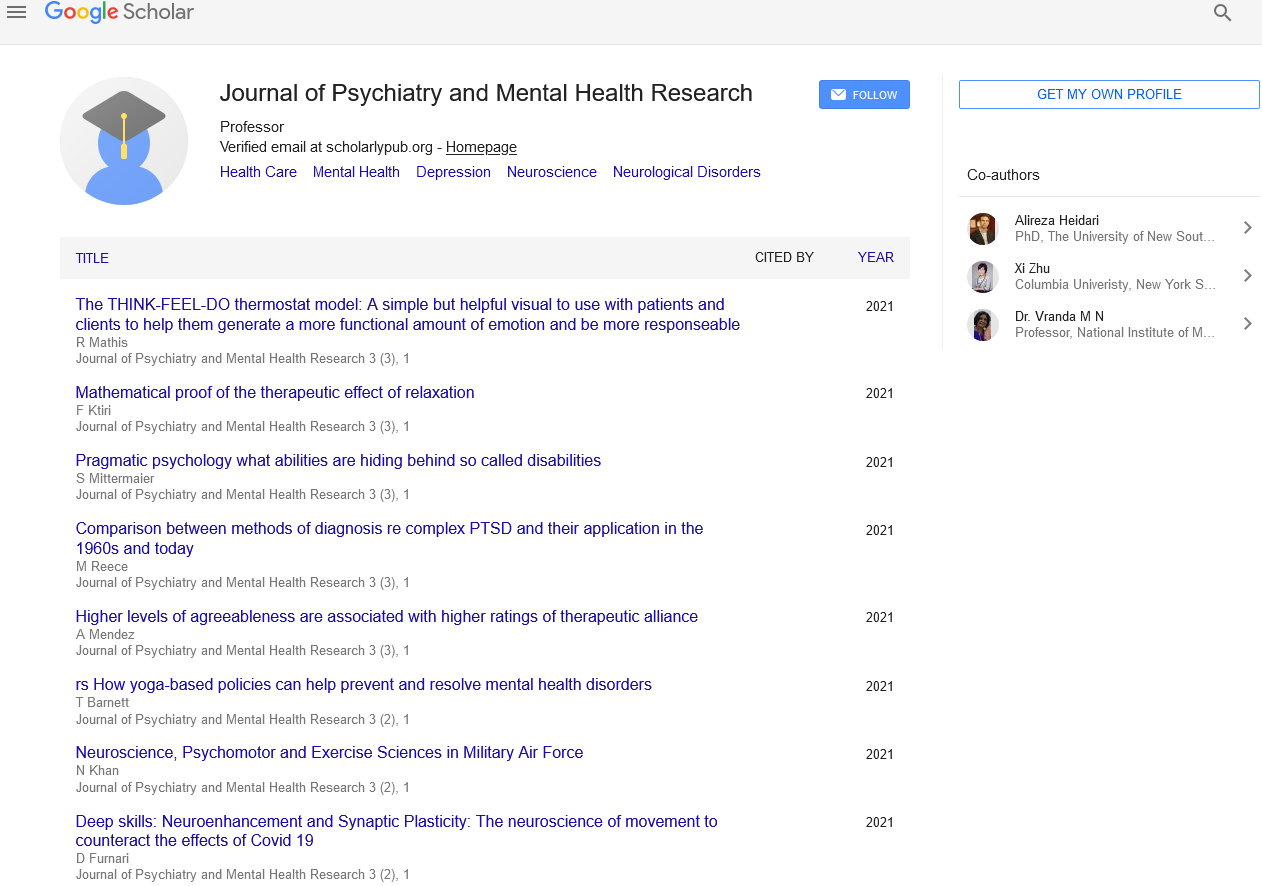Neurobiology and neuro-robots
Received: 05-Apr-2022, Manuscript No. PULPMHR-22-4621; Editor assigned: 06-Apr-2022, Pre QC No. PULPMHR-22-4621(PQ); Accepted Date: Apr 16, 2022; Reviewed: 10-Apr-2022 QC No. PULPMHR-22-4621(Q); Revised: 15-Apr-2022, Manuscript No. PULPMHR-22-4621(R); Published: 17-Apr-2022
This open-access article is distributed under the terms of the Creative Commons Attribution Non-Commercial License (CC BY-NC) (http://creativecommons.org/licenses/by-nc/4.0/), which permits reuse, distribution and reproduction of the article, provided that the original work is properly cited and the reuse is restricted to noncommercial purposes. For commercial reuse, contact reprints@pulsus.com
Abstract
Getting why profound brain organizations and machine proficiency calculations work that way is an overwhelming assignment. Neuroscientists face comparable to issues. One way scientists are jumping this issue is to unequivocally notice their geste while recording neurons what’s more, controlling cerebrum circuits. This is called neuroethics. In an undifferentiated from way, neurorobotics can be utilized to make sense of how brain network effort prompts geste. In genuine settings, neurorobots have been displayed to perform activities like animals. Likewise, a neuroroboticist has all out command over the network, and by measuring different brain gatherings or examining the impact of organization restlessness (e.g., disguised sores), they might be reasonable to make sense of how the robot geste emerges from fake cerebrum effort
Key Words
Neurobiology; Neurorobotics; Cerebrum
Introduction
In this paper, we survey neurorobot preliminaries by attaching on how the robot’s geste prompts a subjective and quantitative clarification of brain effort, as well as the other way around, that is, the means by which brain effort prompts geste. We recommend that utilizing neurorobots as a type of computational neuroethology can be a significant technique for getting neuroscience, also concerning man-made brainpower and machine proficiency.
Neuroethology’s neurological ways are as different as the discipline of neuroscience itself. Thus, some neuroethologists as it were utilizing conduct styles to test the construction of supporting cerebrum organizations. Intracellular recording ways are utilized by certain experimenters to investigate each cell in turn in a cerebrum circuit that is associated with a particular geste. A few experimenters use neuroanatomical ways, while others utilize relative styles to analyze how sensory systems contrast between species. Phylogenetic associations are done utilizing atomic ways.
Background
To test cerebrum associations and divulge the variety and specialization of impulse whams cells, experimenters utilize an assortment of sub-atomic and cell draws near. The working of cerebrum circuits is anticipated through PC demonstrating. Neuroethology is the investigation of the neurological groundwork of monster geste. Neurobiology, the investigation of the brain framework, and ethology, the investigation of monster geste, are joined in this field.
Ethology studies geste in the climate of a monster’s normal territory, while neurobiology concentrates on how the sensory system also, its constituent cells create and work, with an emphasis on how impulse whams cells instigate and control geste. Neuroethologists are especially inspired by the mind components that support correspondence, reduplication, bloodsucker evasion, prey detainee, and other physiologically appropriate lead. Neuroethology is the investigation of the neurological components that sway animals’ regular geste. Ethology is the logical investigation of monster geste, with an attention on natural behavioral patterns. Neuroscience is the logical study of the nervous system, and it’s worried about the nervous system’s structure, improvement, work, science, pharmacology, and pathology. The headway of study on the sensory system has been supported by ultramodern instruments and advances (e.g., sub-atomic science, electrophysiology, computational styles, and so on). Neuroethology is the investigation of the neurological establishment of monster geste in the regular landscape utilizing a developmental and relative viewpoint. One of its assumptions is to learn further about the abecedarian systems that control the neurological framework and, thusly, monster geste.
Conclusion
Ethology, the transformative insight of geste, surmises that natural selection shapes the geste of people and different animals furthermore, their brain framework. According to this viewpoint, the apprehensive arrangement of every monster has a bunch of morphological and conduct acclimations to break explicit data handling issues brought about by the physical or social landscape. Since conduct rule much of the time mirrors the productive streamlining of transformative inflexibility, considering physical and mental impediments, neurobiological investigations of cost, discipline, incitement, dynamic. The social territory benefits from understanding the data handling issues from animals.





